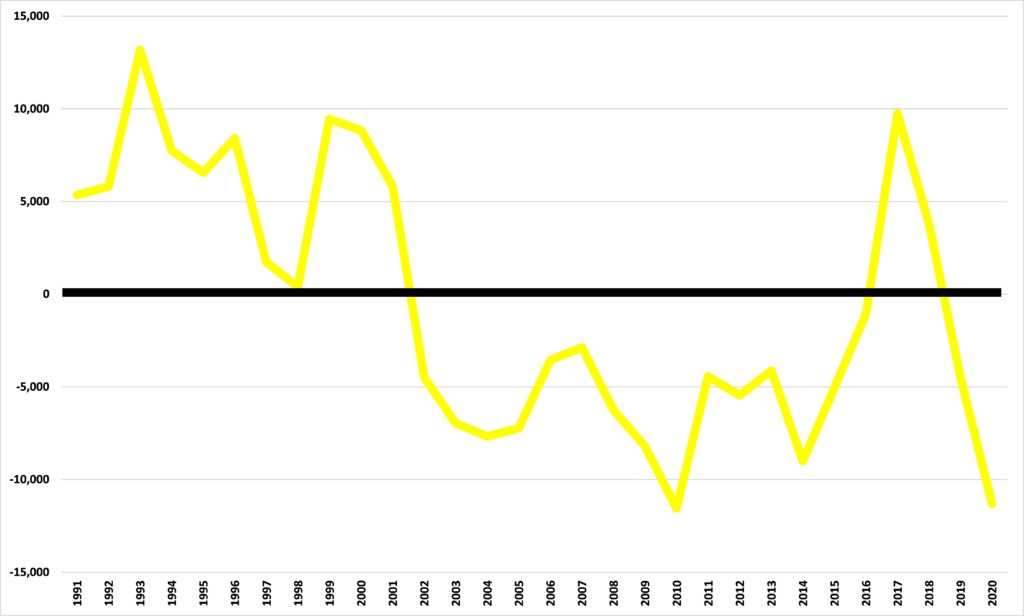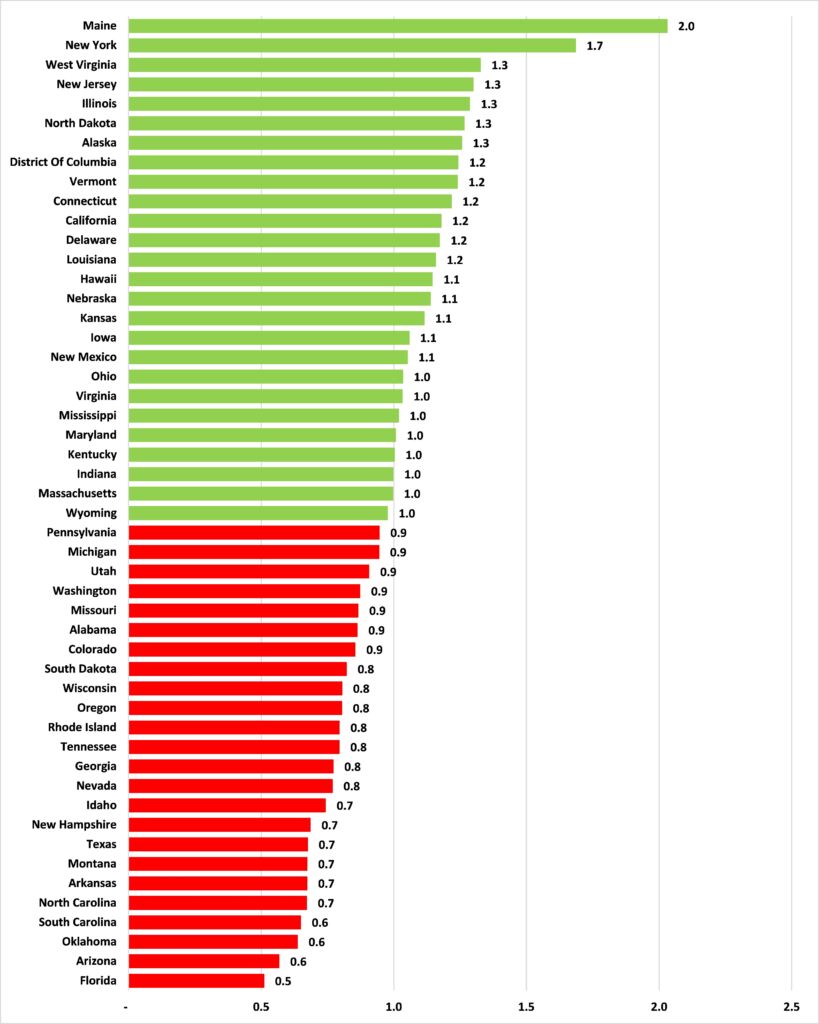IRS data show that Minnesota lost 11,370 residents to other states in 2019-2020
Recent releases of official data have shown that in 2021, Minnesota’s population grew by just 225 people. Our state lost 13,453 residents to other states, its biggest net loss of domestic migrants to other states in at least 30 years. That year also saw the Minneapolis-St. Paul-Bloomington Metropolitan Statistical Area (MSA) lose a net of 15,462 residents to other places in the United States, up from a loss of 1,236 the previous year. And also that year, both Minneapolis and St. Paul lost residents, their population changes comparing unfavorably with cities in neighboring states and their peer cities across the United States.
This loss of residents is a continuation of an old theme. In my report Taxes and Migration: Minnesotans on the Move to Lower Tax States last year, I wrote that:
…from both the Census Bureau and the Internal Revenue Service tell us that the net domestic migration of people into Minnesota turned negative in 2002 and remained
negative until 2017.25 That year and the following, our state actually gained residents on net from other states and some heralded this as a vindication of public policy here.26 However, this inflow dried up as suddenly as it had come: In 2019, Minnesota lost 965 residents on net according to the Census Bureau and in 2020 the net loss was 9,757, the third largest net loss of residents to other states in thirty years…
New data from the Internal Revenue Service allows me to add another year. It shows that, in 2019-2020, Minnesota lost 11,370 residents to other states, as illustrated in Figure 1. The state gained, on net, 1,542 residents from North Dakota and lost 3,921 to Florida.
Figure 1: Net flow of domestic migrants into and out of Minnesota, 2019-2020

This is the largest net outflow since 2010 and the second largest since 1991, as Figure 2 shows.
Figure 2: Annual net domestic migration in Minnesota

Of course, New York has more people to send to other states than Iowa. To account for this, we can look at the ratio of Minnesota’s in-migrants from a particular state to its out-migrants to it. The ratios for these in-migrants to out-migrants for 2019-2020 are shown in Figure 3. A ratio above 1.0 means that Minnesota gained residents from that state; a ratio below 1.0 means we lost residents to it.
Figure 3: Ratio of Minnesota’s domestic in-migrants to out-migrants, 2019-2020

As our report showed, state taxes are a factor driving these movements into and out of Minnesota. The data of this year are likely to have been influenced — possibly significantly — by COVID-19. The fact remains that, once again, Minnesota lost residents.